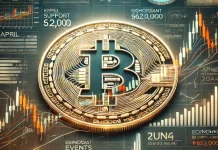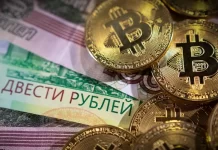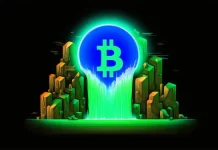[ad_1]
The most commonly known stablecoin is Tether. It is a cryptocurrency that buys one American Dollar from the market before issuing one tether. This means that when one American Dollar leaves active circulation, one Tether enters active circulation. Thus, the price of Tether has stayed stable over the years. A swing of fewer than 10 cents is unheard of in the crypto world. Except, in cases of stablecoins such as Tether (TICKR: USDT)
So, what seems to be the problem with stablecoins? Is it not a good sign that we finally have a clutch of cryptocurrencies that can stay stable despite the high volatility shown by their non-stable brethren?

Actually, No.
Tether just took a 4% tumble which means that it lost its peg despite having USD in the bank to back its token.
In a ridiculously short paraphrasing, money usually came in two variants:
- The ones with intrinsic value (such as Gold), and;
- The ones with extrinsic value (such as FIAT)
Each had its pros and cons but it became generally accepted that the usage of money that has extrinsic value gain currency when the stability of the governments (the issuing authorities) increases. Conversely, as the war clouds begin to loom and political crises come into play, the price of Gold shoots up due to increased demand by people who want to get rid of their FIAT and buy Gold instead.

The regular back and forth between intrinsically valuable currencies and extrinsically valuable currencies gave an opportunity to the powerful. They could stir war-like situations and political stability to keep the cycle going and make profits. The Housing crisis of 2007 caused a sharp decline in the price of the American Dollar and a steep rise in the price of commodities.
Bitcoin, the first cryptocurrency came into being at this time, and analysts rushed to classify it as one of the two types of currencies:
Some called it an intrinsically valuable currency because:
- It had a limited supply.
- Its value was determined by its demand.
While others called it an extrinsically valuable currency because:
- It was fungible.
- It was intangible.
While some people stood by the its-not-a-bug-its-a-feature argument, others saw its volatility as a cautionary tale. This brought several people to the same conclusion that their grandfathers arrived at during the inflationary years following World War II. They pegged the cryptocurrency to the stablest known currency of the time in a bid to stop the inflation.
It was only a matter of time for people to begin minting coins and pegging it to a FIAT currency. Some even tried to peg it to commodities. It is flawed for the same reason that most Americans blame the Chinese for. A Dirty Float. During the Bretton Woods conference of 1944, the top economists of 44 countries arrived at the same conclusion. Maybe, a fixed-exchange-rate system could bring the world’s economic state to behave.
Less than 30 years later, the Americans had to move away from the fixed-exchange-rate system to a partially free float. It is partially free because all governments buy and sell their own currencies and foreign reserves in the open market.
Coming back to stablecoins, they too claim to have established a fixed-exchange-rate system that enables a simple transition from traditional currencies to cryptocurrencies. Surely, if they build it, they would come!
Before we get into the technical issues with stablecoins, let’s address the human element first.
Agencies manipulate the Stablecoin
Tether, the world’s largest stablecoin by market share was accused of creating new USDT without buying an equal number of American Dollars. This is an audit problem. For as long as there is a central authority, the element of human error/malice will remain.
Even if we build a smart contract that buys American Dollars (or any other currency) and then issues a stablecoin, the problems will remain.
Stablecoins affect Velocity
Velocity is the rate at which a currency changes hands. If the velocity is too high or too low, the price will fall. Stablecoins remove a currency or commodity from circulation and create artificial scarcity. Technically, the scarcity should not exist because of the 1:1 exchange rate. Practically though, no jurisdiction will agree to accept a cryptocurrency issued by a non-governmental body and will demand USD instead.

So, while a 1:1 exchange rate should lead to an increase in the value of the stablecoin, it causes a slight fall in prices due to deflated demand.
Stablecoins are not Decentralized
The stablecoins have issuers to create the token. This is not decentralization. Unless you, I, and everybody else have equal opportunity to create the same stablecoin, like the activity of mining bitcoin, there is no decentralization. Centralized stablecoins are similar to the big banks that were “Too Big to Fail” until they failed.
Stablecoins are Inflationary
The issue of 1 stablecoin to and the removal of 1 FIAT from the economy is inflationary. The exchange of 1 stablecoin for 1 FIAT does not create an economic activity. This makes stablecoins inflationary. Since the FIAT removed from the ecosystem is not destroyed/burned, it is a part of the ecosystem. Issuers can keep this FIAT in banks which loans it out to the public and the locked FIAT increases supply and causes inflation.
Stablecoins Decrease the Tax Base
If you make a profit by trading cryptocurrencies you must pay your taxes on the profits. But, if a trader buys stablecoins during bear market runs, he/she can keep their crypto-profits off the books. Thus, the number of taxpayers and the amount of tax collected decreases. Without taxes, the governments cannot function and will break down. This is different from Zimbabwe and Venezuela. In those countries the government is intact but their economy has fallen. With no government will come anarchy, not laissez-faire.
Also known as Security Tokens, these crypto tokens have a better chance to dodge the problems associated with stablecoins. They are backed by an underlying asset which can be company equities, real estate, or, the world’s favorite asset for over 2000 years – Gold.
Due to their intrinsic value, assets have greater price stability but a lower liquidity. Asset-backed tokens, on the other hand, bring liquidity to the assets without affecting the price stability. If you think about it, this is what happened during the early days of IPOs (Initial Public Offerings). If you owned a big company, you could not sell it. But, if you could divide the company ownership into smaller pieces, you could sell parts of it. That was the birth of equities.
However, equities are highly regulated entities and it is hard to purchase equities in multiple companies based in multiple jurisdictions. At least, for the smaller investor. This is where security tokens come into play. With a standard KYC process and PEP, AML checks, you can purchase equities of companies based in different jurisdictions.
While the standardization of KYC might be a few months/years away, the initial foray can be led by jurisdiction-agnostic assets such as gold which have more palatability. According to the Founder of Aurus, Stefan Gergely,
“Overall liquidity will increase; price will probably stabilize even more. I even expect there to be a long-term, heavy impact such as reducing the potential energy of a financial crisis since people now have a viable alternative to their own currency”.
Crypto-tokens as software layers t0 ensure the fairness of the whole system to via smart contracts is what will bring more acceptance to asset-backed tokens. Offering complex financial products to a people that are still trying to wrap their heads around digital wallet and cryptocurrencies is a hard-sell.
There are other unresolved issues as well such as bounty programs which basically give people free money which is never valued. If I get 10,000 ABC tokens (a fictional token) which I can convert to even 1 ETH, I will not value that 1ETH because I did not work for it. ICOs, on an average, give out 2-5% of their total token supply as bounties and airdrops. This is also a reason for the fall in the price of ETH.
It does not end here, the whacky economics have a dissuasive effect on the investors which was summed up by, Simon Owen, the in-house counsel for Aurus:
I’ve never been a huge fan of bounty campaigns. I understand why many token offerings do them but it seems to me more like a weakness. Here’s how I see things:
- Most tokens, even the infamous utility tokens (which I’ve always stood quite firmly against) act in certain ways like securities or shares: their value is supposed to go up, proportionate to the success of the underlying project.
- If you own a particular token before your friends or network, you have a vested interest in them getting it anyway, be it because you believe in the project and want to see your friends profit alongside you, be it to hedge certain potential risks.
- Regardless, there is an incentive for you to encourage others to buy the token. Any incentive created by the company on top of this has, in my point of view, higher chances of scaring away investors who actually know how to judge the value of a project.
Even though the top 100 bitcoin wallets hold a vast majority of the bitcoins, the community believes in them because bitcoin is decentralized. Bitcoin is a parallel currency. Bitcoin is not affected by the price of the FIAT currencies. The recent downturn of the crypto-markets has taken us back to 1944. The top economists are contemplating stablecoins as a solution to help us sail through these tumultuous times. Fixed-exchange-rate systems led to an economic depression almost 50 years ago. Stablecoins, if left unchecked will make history repeat and kill the decentralization movement as we know it.
In sum, people think that the march from centralization to decentralization is linear. History teaches us that it is circular. The road back towards centralization goes through stablecoins. The stablecoins are not a bridge, they are a flight of Penrose stairs.

Featured image from Shutterstock.
Follow us on Telegram or subscribe to our newsletter here.
• Join CCN’s crypto community for $9.99 per month, click here.
• Want exclusive analysis and crypto insights from Hacked.com? Click here.
• Open Positions at CCN: Full Time and Part Time Journalists Wanted.
Advertisement
[ad_2]
Source link




